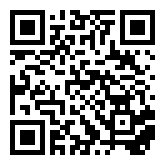Abstract:
The Jews are an ethno-religious group that has been referred to more than any other ethnic groups in the Holy Qur'an. The frequent references to the Jews are focused on their opposition and hostility to Islam. Considering the repeated mention of these people and the frequent depiction of the story of the Israelites in the Holy Qur'an, it is essential for the Islamic community to have accurate knowledge of this tribe. Obviously, the main Islamic source to obtain and develop this recognition is the Holy Quran.
One of the modern methods in revealing the purpose and meaning of the Qur'an in various subjects is the semantics of Quranic words and phrases. Based on this, the semantics of "the Jew" in the Quran can provide precise understanding of this people.
In this article, through revealing the syntagm of each word signifying "the Jew" in the Qur'an and their explications, the semantic components of "the Jew" in the Qur'an including the doctrinal, ethical and practical components are obtained.
These components are: denying God, aggression, covering facts, disobedience to God and Prophets, materialistic tendency, arrogance, rebellion, hostility, mockery, distraction, disagreement, ignorance, fear, jealousy and hypocrisy.




